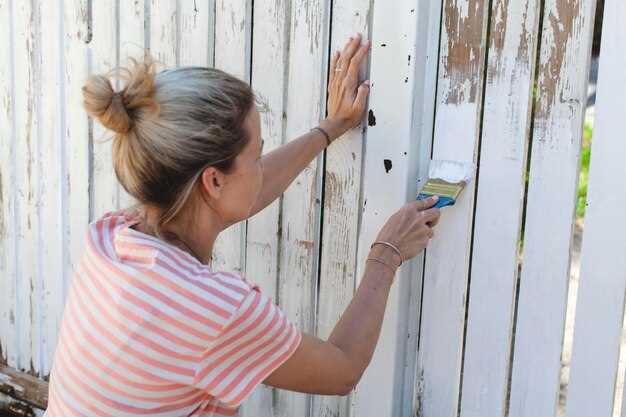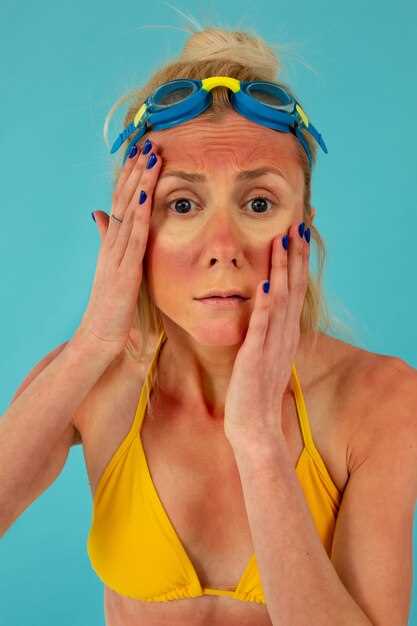
Automotive paint plays a crucial role in the overall aesthetics and protection of vehicles. However, prolonged exposure to the sun’s harmful UV rays can lead to significant damage, resulting in fading, peeling, and deterioration of the paintwork. To preserve the unique qualities of your vehicle’s paint, it is essential to implement effective protection strategies against UV radiation.
One of the most effective methods of safeguarding automotive paint from UV damage is through the application of high-quality protective coatings. These coatings not only enhance the vehicle’s appearance but also form a barrier against environmental stressors. Furthermore, using wax or sealants with built-in UV filters can provide an additional layer of protection, ensuring that your car maintains its vibrant color and finish over time.
Regular maintenance routines, such as washing and detailing, play a pivotal role in the preservation of automotive paint. By regularly removing dirt, grime, and pollutants, you can prevent potential surface damage that may exacerbate the effects of UV exposure. Additionally, parking your vehicle in shaded areas or using car covers when not in use can significantly reduce the risks associated with sun exposure.
By understanding the importance of protection against UV radiation and employing various strategies, car owners can effectively maintain the unique characteristics of their automotive paint, ensuring both aesthetic appeal and long-term durability.
Understanding UV Damage to Automotive Paint Types
Automotive paint is not only crucial for aesthetics but also serves as a protective barrier for the vehicle’s body. However, ultraviolet (UV) rays are one of the primary threats to the longevity and integrity of automotive paint. Understanding how these rays affect different paint types is essential for implementing effective protection strategies.
Base coat finishes, which are commonly used in modern vehicles, can suffer significant degradation when exposed to UV radiation. Over time, UV rays break down the chemical bonds in the paint, leading to fading, chalking, and a dull appearance. This degradation can be accelerated by environmental factors such as heat, humidity, and exposure to chemical pollutants.
Another paint type, clear coats, is applied on top of the base coat to provide additional gloss and protection. However, these clear coats are not immune to UV damage. Prolonged exposure can result in yellowing and peeling, compromising not just the appearance but also the base layer beneath. In vehicles with metallic finishes, the impact of UV rays can lead to uneven surface reflections, diminishing the paint’s overall sheen.
Interestingly, non-metallic paints tend to exhibit better UV resistance compared to their metallic counterparts. This resistance is due to the absence of metal flakes that can magnify UV exposure. Nonetheless, non-metallic finishes still require vigilant protection measures to prevent discoloration and surface degradation over time.
In conclusion, understanding the nuances of UV damage across various automotive paint types is vital for vehicle care. Employing strategies such as regular waxing, using UV-protective coatings, and parking in shaded or covered areas can significantly enhance the durability of automotive finishes against harmful UV rays.
Choosing the Right Ceramic Coatings for UV Resistance
When selecting ceramic coatings for automotive paint, prioritizing UV resistance is essential for maintaining the vehicle’s aesthetic appeal and structural integrity. UV rays can cause significant damage to automotive finishes, leading to fading, oxidation, and loss of gloss over time. A high-quality ceramic coating specifically designed for UV protection can effectively shield the paint from these harmful effects.
Look for ceramic coatings that contain specialized UV absorbers. These additives are engineered to neutralize UV radiation, preventing it from penetrating the paint surface. Additionally, opt for coatings with a high rating for hardness and durability, as these attributes contribute to enhanced protection against environmental contaminants that can exacerbate UV damage.
Consider the longevity of the ceramic coating as well. Some products offer ceramic layers that last for several years, providing long-term UV protection without requiring frequent reapplication. Furthermore, ensure that the coating is resistant to chemical exposures, as these can weaken the protective barrier and reduce its efficiency against UV rays.
Read product reviews and consult professionals to identify reputable brands known for their performance in UV protection. Testing the coatings in various weather conditions can also provide insights into their effectiveness, as real-world scenarios often reveal how well a coating can resist UV degradation over time.
Ultimately, investing in the right ceramic coating for your vehicle not only enhances its appearance but also extends its lifespan by providing robust UV protection against the relentless effects of the sun.
Applying Paint Sealants for Enhanced Protection
Automotive paint is constantly exposed to various environmental factors, which can lead to significant damage over time. One of the most detrimental sources of wear is ultraviolet (UV) rays from the sun. To combat this issue, applying paint sealants offers a reliable solution for enhancing protection and preserving the aesthetic appeal of your vehicle.
Paint sealants work by creating a protective layer over the automotive paint, which can significantly reduce the risks associated with UV exposure. Unlike traditional waxes, sealants are formulated with synthetic polymers that bond effectively to the paint surface, providing long-lasting defense against harmful elements.
Here are the key benefits of applying paint sealants:
| Benefit | Description |
|---|---|
| UV Protection | Sealants provide a barrier that reflects UV rays, thereby protecting the paint from fading and oxidation. |
| Durability | Compared to wax, sealants last longer, often up to six months or more, making them a more economical option for ongoing protection. |
| Enhanced Shine | Applying a sealant not only protects but also boosts the overall gloss and reflectivity of the paint finish. |
| Ease of Application | Most sealants are easy to apply and don’t require extensive preparation, allowing for a straightforward detailing process. |
When selecting a paint sealant, consider factors such as the product’s compatibility with your specific paint type and its resistance to other environmental factors, such as acid rain and road salt. A proper application of paint sealants can serve as a formidable shield against UV-induced damage, keeping your vehicle looking pristine for longer.
The Role of Regular Washing and Detailing in Sun Protection

Regular washing and detailing are essential components in maintaining the protection of automotive paint, especially against harmful UV rays. Over time, contaminants such as dirt, dust, bird droppings, and tree sap can accumulate on a vehicle’s surface. These substances can bond with the paint, leading to potential damage when exposed to sunlight.
UV rays can cause oxidative damage, resulting in fading, discoloration, and a dull appearance. By routinely washing the vehicle, these harmful contaminants are removed, reducing the risk of long-term damage. Utilizing a gentle automotive shampoo ensures that the paint is protected during the washing process while effectively eliminating dirt.
Detailing goes a step further by incorporating the use of protective waxes and sealants. These products create a barrier between the paint and harmful UV radiation. A well-applied wax not only enhances shine but also reflects UV rays, significantly decreasing the risk of fading. Regular detailing treatments can extend the life of the paint job and maintain the vehicle’s aesthetic appeal.
Additionally, detailing involves routines such as clay bar treatments and polishing, which eliminate surface imperfections that may trap harmful substances. This preparation makes the paint more resilient against UV exposure, ensuring that the protective finishes adhere properly. Consistent maintenance of both the interior and exterior surfaces of the vehicle is crucial for mitigating sun-related issues.
Incorporating regular washing and professional detailing into a vehicle care regimen fundamentally supports sun protection strategies. By prioritizing these practices, car owners can preserve their vehicle’s paint quality and appearance for years to come.
Utilizing Car Covers for Outdoor Parking Situations

When parking your vehicle outdoors, protecting its unique automotive paint from damage caused by UV exposure is crucial. Car covers provide an effective solution to shield against environmental factors that can lead to fading and deterioration over time.
Here are several key benefits of using car covers in outdoor parking situations:
- UV Protection: High-quality car covers are often designed with UV-resistant materials that significantly reduce sun exposure. This minimizes the risk of oxidation and maintains the vibrant color of the paint.
- Scratch and Ding Prevention: Covers act as a barrier against falling debris, tree sap, and bird droppings, which can all cause surface damage. By protecting the exterior, car covers help maintain the overall aesthetic and value of the vehicle.
- Weather Resistance: Many car covers are waterproof or water-resistant, protecting the paint from rain, snow, and humidity, which can contribute to corrosion and other forms of damage.
- Dust and Dirt Protection: Dust accumulation can harm the paint when wiped off. A car cover keeps the vehicle cleaner, reducing the need for frequent washes that can wear down the paint finish.
When choosing a car cover, consider the following factors to ensure maximum protection:
- Material: Opt for covers made from breathable, UV-resistant fabric that offers durability and protection without trapping moisture.
- Fit: Select a cover tailored to your vehicle’s dimensions for proper coverage, ensuring all parts of the car are well protected.
- Ease of Use: Look for lightweight options that are easy to put on and remove, allowing for quick access to the vehicle when needed.
In conclusion, utilizing a car cover during outdoor parking situations not only safeguards your vehicle’s unique paint against UV damage but also enhances its longevity and keeps it looking pristine.
Long-term Storage Solutions to Prevent UV Impact
When it comes to preserving the integrity of automotive paint during long-term storage, implementing effective strategies against UV damage is essential. The primary goal is to minimize direct exposure to sunlight, which can lead to fading, discoloration, and degradation of the paint’s protective layers.
One effective solution is to store the vehicle in a climate-controlled environment. A garage or storage unit that maintains consistent temperature and humidity levels helps to reduce the harmful effects of UV rays. Additionally, investing in UV-blocking window films or reflective tarps can further shield the vehicle from sunlight even in enclosed spaces.
Using a high-quality car cover specifically designed for outdoor use is another practical method. These covers should be UV-resistant and breathable, allowing moisture to escape while protecting against harmful rays. A well-fitted cover not only guards the paint but also protects it from dust and debris that can cause scratches.
Regularly applying a layer of wax or a paint sealant to the surface of the vehicle can provide an additional barrier against UV damage. These products enhance the paint’s resilience and shine, creating a protective shield that reflects harmful rays. Maintenance of this coating ensures that the paint remains in optimal condition during storage.
In addition to physical barriers, consider positioning the vehicle strategically within the storage area. Placing it away from windows or any direct light sources can significantly reduce UV exposure. If possible, utilize storage solutions such as an indoor car lift to elevate the vehicle, minimizing exposure even further.
Finally, continuously monitoring the condition of the paint and storage environment is crucial. Checking for any signs of damage or degradation allows for timely intervention, ensuring that the vehicle remains protected from long-term UV impact.
